History of the Rolex Submariner – Part 1, The Early References
Today a global icon, it's clear Rolex had big plans for its Submariner right from the beginning.
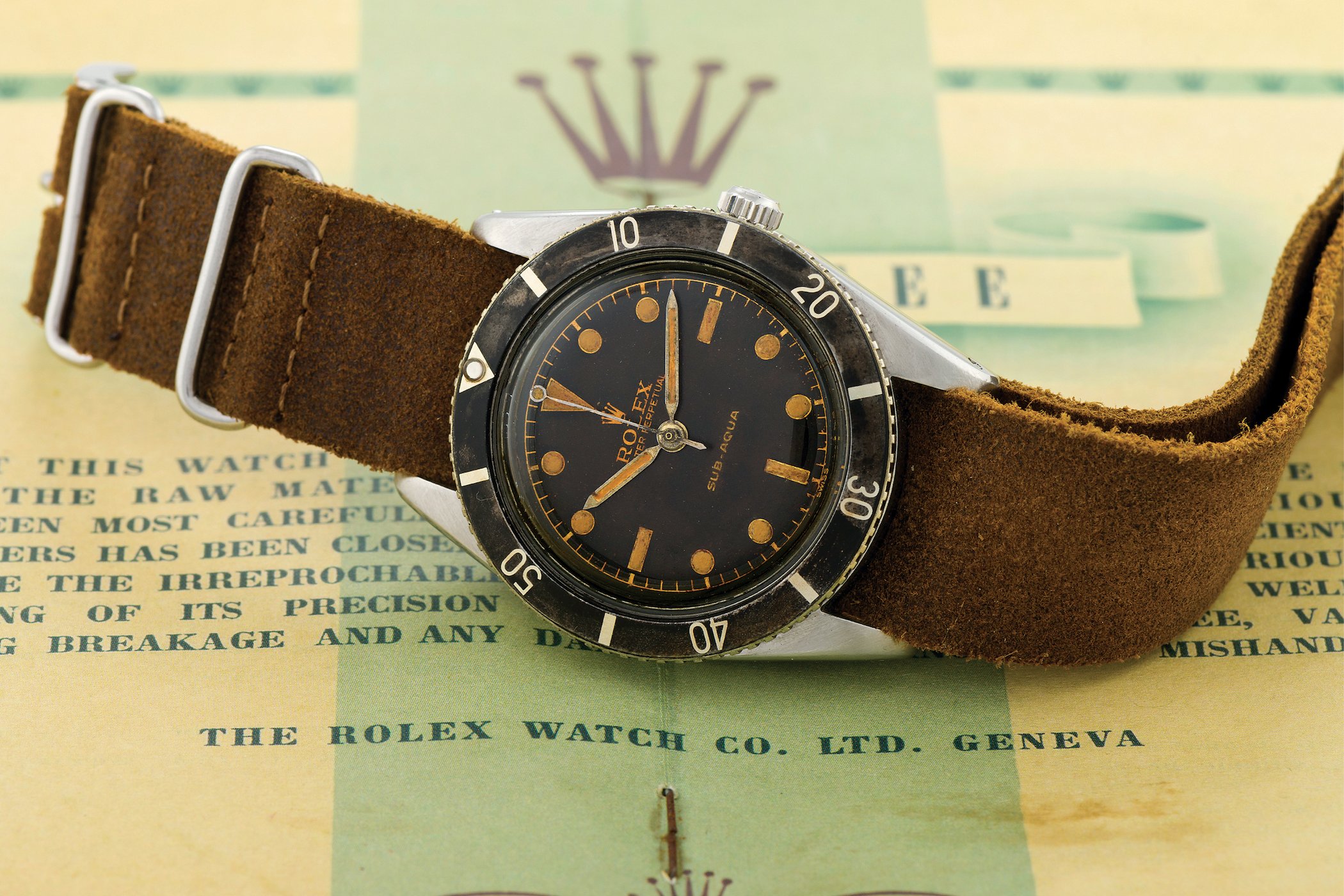
If it’s ever possible for one watch to represent an entire industry, heck an entire cultural phenomenon, that watch would be the Rolex Submariner. Call it what you like. Iconic. Ubiquitous. Classy. Crass. Whichever side of the fence you sit on, there is no denying the long-standing influence of this inherently simple timekeeper. It has transcended the role of mere product and will be forever immortalised as one of – if not the – best sports watches (mechanical or otherwise) ever created.
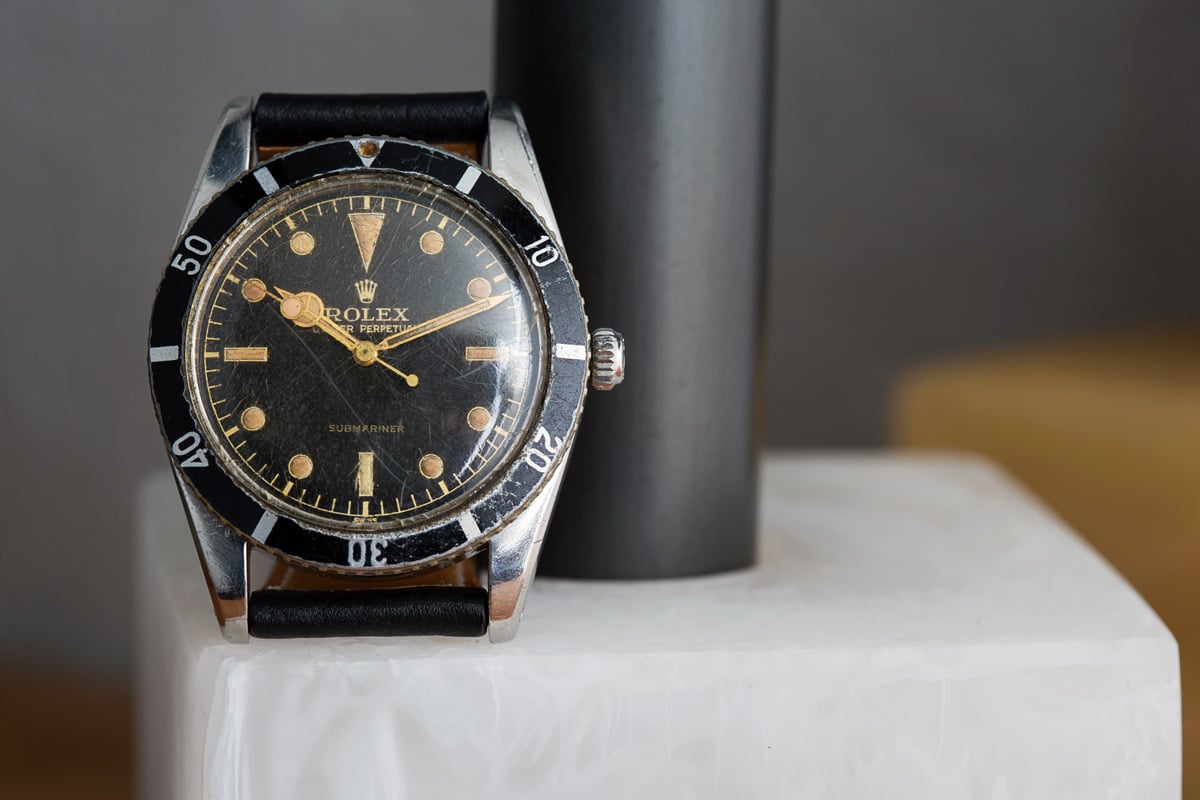
Too grandiose a claim, you say? Perhaps. But I would wager that there is nary a watch guy or girl out there who could honestly tell you they haven’t secretly coveted the humble Submariner at one point or another in their watch collecting journey. Its appeal spans continents, generations and gender and shows no signs of waning. And so, in true MONOCHROME fashion, we are giving this model the historical deep dive it very much deserves.
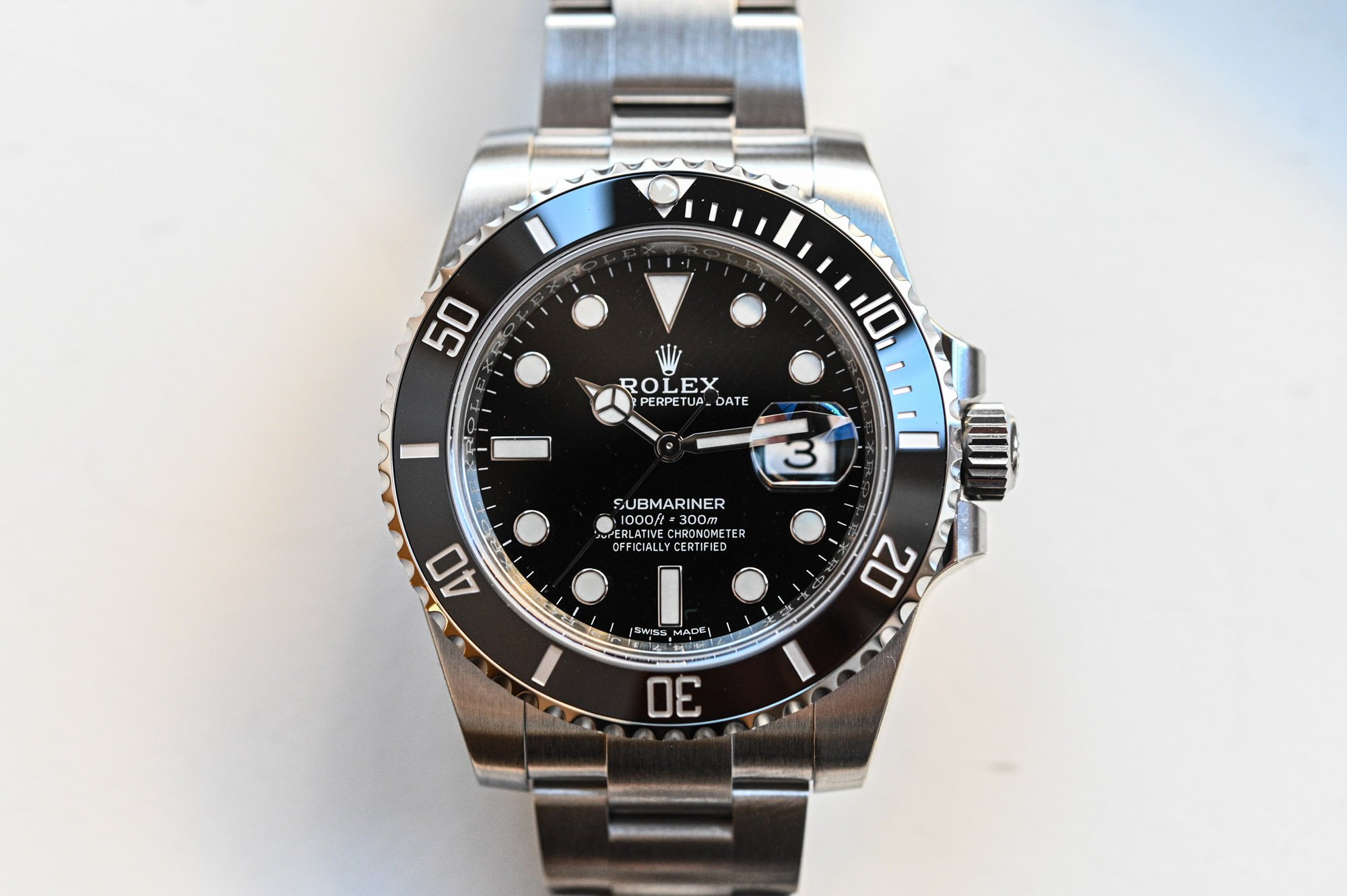
We’ll start our journey at the beginning (as good as place as any) with the original 6XXX references. Then in Part 2, we’ll move onto the 55XX references and the introduction of the date complication, a pivotal moment. Part 3 will cover the next evolution, taking us through to the 5-digit references and all the changes that came with them. And finally, we’ll close with Part 4, an in-depth look at the current Rolex Submariner and Rolex Submariner Date. As you will soon discover, a lot has changed over the years, but even more, has stayed the same. A testament to the enduring power of pure and functional design, consistently executed to the most exacting standards possible.
Origins of the Rolex Submariner
Born in the post-war economic boom of the 1950s, the Rolex Submariner marked the brand’s definitive foray into the world of the sports watch. It’s true the Explorer came to market a few months earlier, but that model was more narrowly targeted at adventurers and was not as robust in size or function. The “Crown” was of course already a pioneer of resilient water-going watches, having created one of the first dustproof and waterproof wristwatches back in 1926 (known as the Rolex Oyster). This would be further enhanced a few years later by the addition of a self-winding mechanism with a Perpetual rotor (the latter of which was invented and patented by Rolex in 1931).
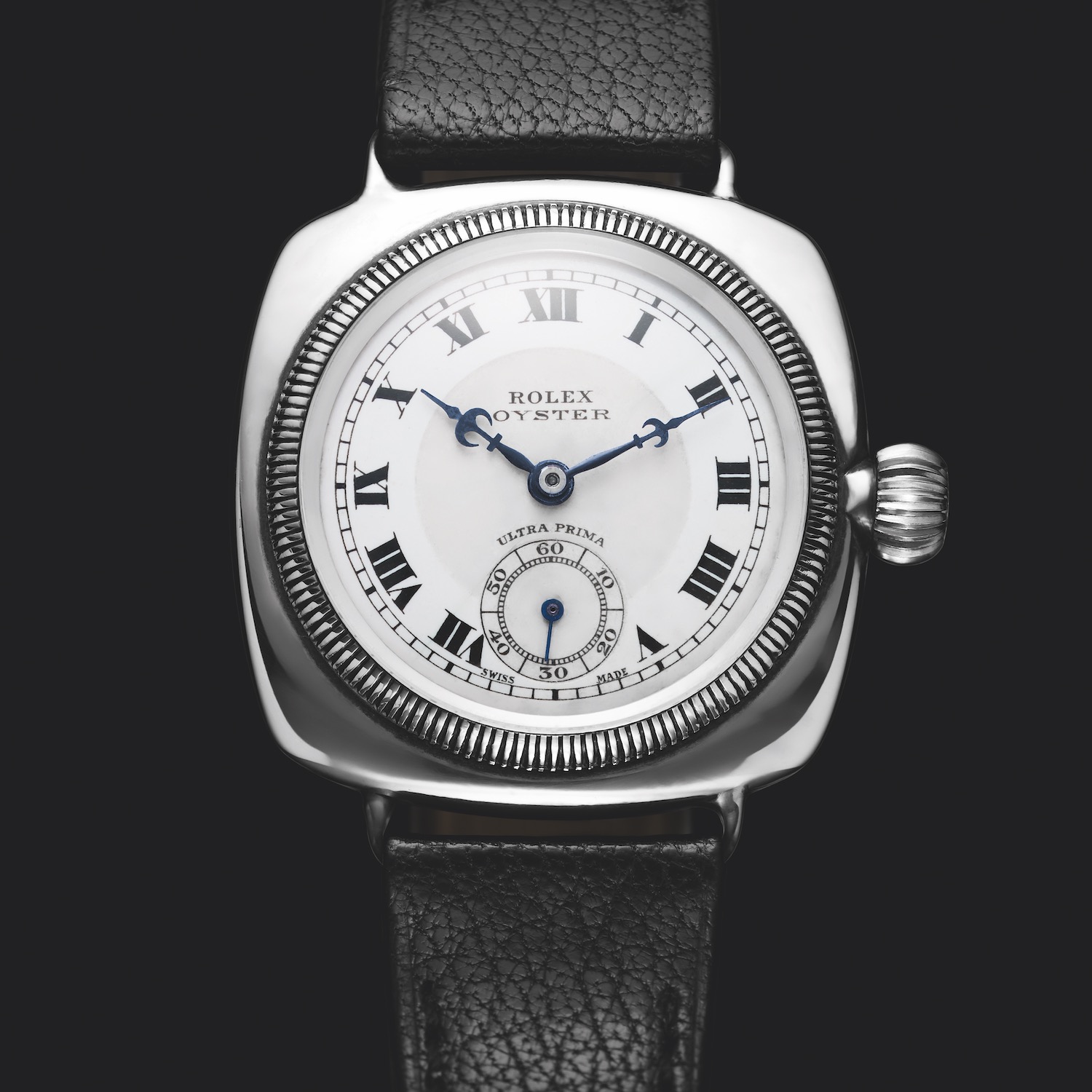
Yet, it would be a bit of a stretch to refer to the models Rolex produced during these years (primarily the Oyster Perpetual and the Datejust, as well as a few chronographs, etc.) as true sports watches. To be fair though, at this point in human history, speciality watches weren’t really a thing yet. Most people only owned one watch and they wanted to be able to wear it for all occasions. Early Submariners still satisfied that requirement, but also added a level of functionality that catered to the public’s growing interest in diving, popularised by the heroic feats of the various commando frogmen units active during the war.
One such early scuba diving enthusiast was Frenchman René-Paul Jeanneret. In addition to being a close personal friend of Jacques-Yves Cousteau, and a keen underwater explorer himself, he also sat on the Rolex Board of Directors. Jeanneret is attributed with conceiving the idea of a sporty yet elegant everyday watch that would be waterproof. He convinced the other directors that this would allow Rolex to expand its customer base and help propel the brand into new territory. How right he was!
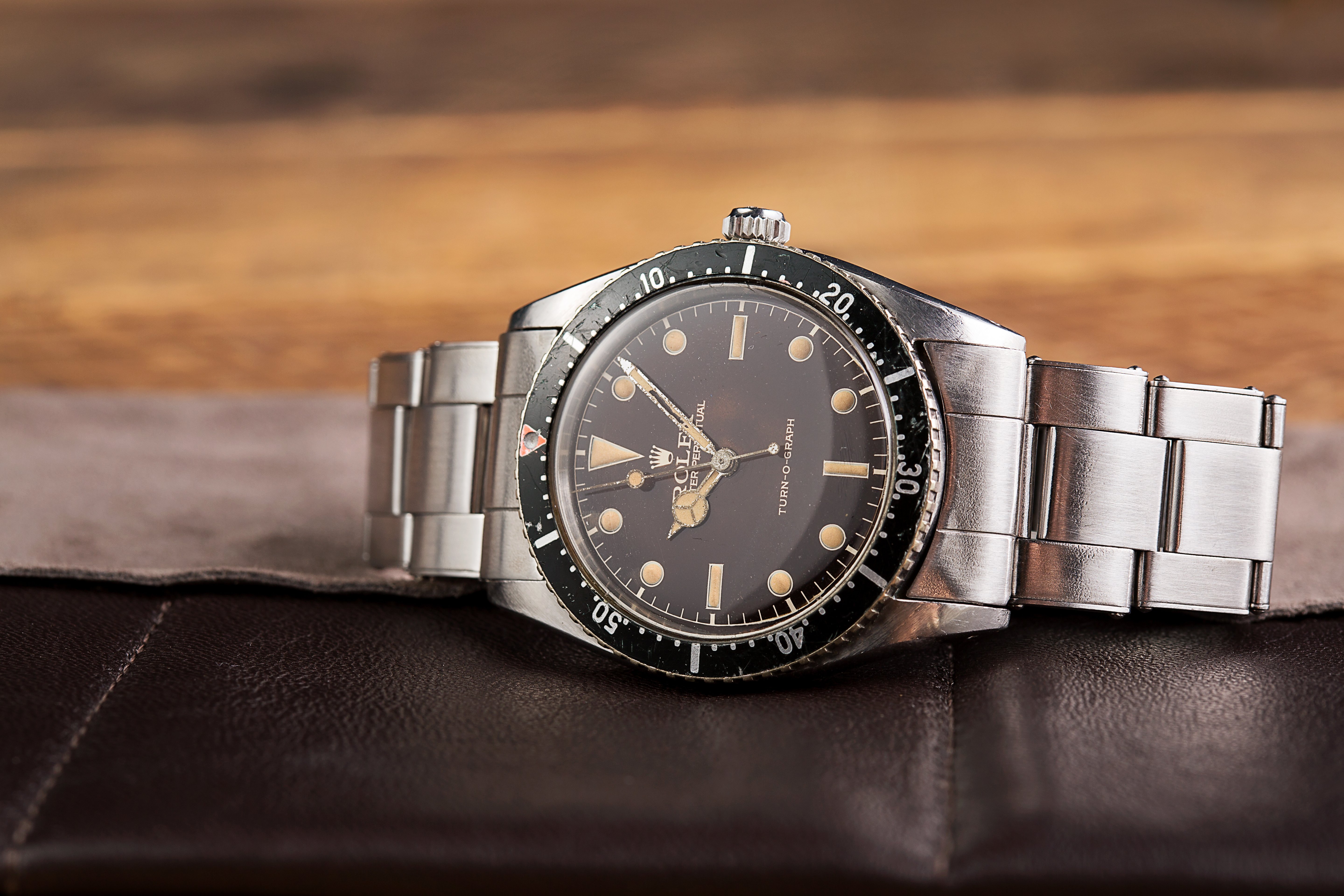
Development began on this pioneering new model in the early 1950s, with production and testing commencing in 1953. The first models were officially debuted to the market at Baselworld in 1954. However, Rolex considers the birth year of its iconic dive watch to be 1953, when the first production models were completed. Indeed, the Ref. 6202 Turn-O-Graph, which is frequently considered the precursor to the Submariner, made its brief debut in 1953. You can read more about that watch here. Below, the trilogy of 1953 Rolex watches – Turn-O-Graph, Explorer and Submariner.
1953 was also the year Rolex pulled off one of its most memorable, albeit risky, marketing stunts. Which is saying something for a brand that already had an impressive reputation for product placement by this point. Long story short, Rolex decided that the best way to get the word out about its world-class waterproof watches was to show one in action. Extreme action. And so, when Swiss physicist, inventor and explorer, Auguste Piccard took his Bathyscape deep-diving submarine down to a mind-bending depth of 3,131.8 meters, a specially designed Rolex went with it. The watch later emerged from the successful dive unscathed and keeping perfect time. And thus the stage was set for the debut of the Rolex Submariner.
Let’s turn our attention now to the key early references.
Ref. 6204 – 1953
This is the Ref. 6204, the first Rolex model to feature the word “Submariner” on the dial. A single line of text, printed above 6 o’clock, that would change the entire course of sports watch history. Of course, Rolex didn’t know this at the time, and so as was typical of the brand (at least back then), not all Ref. 6204 models actually have Submariner on the dial. Other known versions include the “Sub-Aqua”, produced exclusively for the British market.
The dials are primarily plain black with a gilt finish, but some were made with a honeycomb texture. Below 12 o’clock, the words “Rolex” and “Oyster Perpetual” appear on two lines. Again, there is subtle variation here. On earlier models, the words “Oyster” and “Perpetual” are spaced further apart. These are referred to as “split logo” dials. On later models, the text is closer together, like what you see on the modern Submariner.
The layout of the dial is immediately familiar: upside-down triangle at 12 o’clock; baton-shaped markers at 3, 6 and 9 o’clock; and dot markers for the remaining hours. Around the periphery is a chapter ring for the minutes and running seconds. Eagle-eyed observers will also note the absence of Rolex’s now-iconic “Mercedes” sports hands. Instead, the Ref. 6204 features thin, pencil-shaped hands. And the seconds has a lollipop at the tip. Framing the dial is a rotating bezel with a black insert. You’ll notice there are no smaller graduations (hashings) for the minutes between 0 and 15 that would become standard on later models.
The case measures 37mm in diameter and is quite thin compared to later models. At 5.3mm, the crown is small but arguably proportional to the dimensions of the case. Upon its release, Rolex touted the Submariner as the first wristwatch waterproof to a depth of 100m. Slightly deeper than Blancpain’s Fifty Fathoms (rated to 91.45m), which had debuted a few months earlier in 1953. Inside the case was the Rolex calibre A260, a reasonably robust automatic movement with built-in shock protection used in other so-called “bubble-back” models.
Ref. 6205 (Series 1 and Series 2) – 1954 – 1955
The Ref. 6204 was only in production for a very short period of time and was immediately succeeded by the first series of the Ref. 6205 in early 1954. For reasons unknown, Rolex decided to remove the “Submariner” text on the dial for this series, earning it the nickname “clean dial” Sub. Outside of this historically significant but relatively minor change, the dial is pretty consistent with the earlier Ref. 6204. Rolex did make the case of the Ref. 6205 thicker though and upsized the crown somewhat to 6mm. The former change was purely for aesthetic reasons, aimed at giving the watch a more rugged appearance, whilst the latter was intended to make the operation of the crown more user friendly.
It’s the second series of the Ref. 6205, also released in 1954, where the Submariner that we know and love today begins to take shape. The most significant change is, of course, the introduction of the now instantly recognisable Mercedes-style sports hands. Rolex will continue to tweak the design of these hands over the coming years, but already we are witnessing the birth of an icon. The other important revision is the return of the “Submariner” text to the dial above 6 o’clock. Again, Rolex follows its own decision-making process here, which we as mere mortals, will never be privy to. In any event, you could be forgiven for assuming that from here on out, the “Submariner” text is here to stay. But you would be wrong…
Ref. 6200 (Series 1 and Series 2) – 1955 – 1956
The fact that the Ref. 6200 does not follow conventional, chronological numbering is possibly the least remarkable thing about this model. Yes, it was released after the Ref. 6204 and Ref. 6205. And yes, 6200 is lower than both these numbers. Why? Nobody knows. The popular theory is that it was in development at the same time or prior to the Ref. 6204 but was held back. But again, that’s just a theory. As I said though, that’s not the most interesting thing about this model, not by a long shot.
Like the Ref. 6205, the Ref. 6200 was produced in two distinct series. And it introduced a number of changes to the Submariner, some of which carried through to later models and some which notably didn’t. The most distinctive thing about the Ref. 6200 is that it features an “Explorer”-style dial. Meaning a 3-6-9 Arabic numeral configuration replacing the baton markers (first popularised on the Rolex Explorer, in case you didn’t know).
To make things even more interesting, there are two variations of this dial (hence Series 1 and Series 2). Series 1 is the cleaner of the two, with just a Rolex logo below 12 o’clock and once again – for no apparent reason – the word “Submariner” is absent. Series 2 meanwhile features a larger logo, as well as the Submariner designation back above 6 o’clock. Everything else is pretty much the same as the Ref. 6205 in terms of the dial and bezel.
The case, however, is thicker and bulkier than earlier references and is the first to feature the 8mm “big crown” complete with Brevet (patent) signature. These two changes combined to increase the water-resistance of the watch to 200m, although that depth rating doesn’t appear anywhere on the dial yet. Inside is an updated movement in the form of the self-winding A296 calibre. Similar in most ways to its predecessor but with a larger diameter of 29.5mm. Needless to say that this reference, with its unusual Explorer dial, is also one of the most coveted Rolex watches and usually fetches big numbers at auction.
Ref. 6536 & Ref. 6538 – 1956 -1958
As you’ve probably realised by now, in the early years, Rolex was evolving the Submariner at a rapid pace. Every couple of years a new reference was coming out, with subtle tweaks and updates. Very unlike the Rolex we know today. Invariably there was some overlap between the production of new and existing models, and in the case of the Ref. 6536 and the Ref. 6538 manufacturing actually happened in parallel. Although as you will see, these two references are distinctly different from each other in several key ways.
Ref. 6536
Firstly, the Ref. 6536/1 uses the thinner case of the earlier Ref. 6205, as well as its 6mm crown. As a result, it’s only rated water-resistant to 100m. The case of Ref. 6538 meanwhile is more akin to the Ref. 6200 and features the same 8mm crown with Brevet stamp. And of course, this being Rolex, both were produced in more than one version. In fact, there are three distinct versions of the Ref. 6536/1 and two of the Ref. 6538.
The first version of the Ref. 6536/1 introduced what is now commonly referred to as the “four-line” Submariner dial. Meaning “Rolex / Oyster Perpetual” at 12 o’clock and “100m = 330ft / Submariner” at 6 o’clock. This is the first time the depth rating appeared on a Submariner dial and it would go on to become a key trait of the model, as well as the later Sea-Dweller. Outside of these changes, the dial is virtually identical to previous models, although the Mercedes sports hands were further tweaked, and the seconds hand was painted bright white to make it more legible. Likewise, the bezel on the first series is unchanged. A key update though on this model is the introduction of the self-winding calibre 1030. The use of this slimmer movement means a bubble-back caseback is no longer required, giving the Ref. 6536/1 a slimmer profile overall.
A further two versions of the Ref. 6536/1 would follow. The second one introduced the famous upside-down red triangle to the bezel and a slightly tweaked seconds hand (the round lume plot reduced in size). While the third and final version features a bezel with a red triangle and hash markings between 0 and 15 minutes. Although reportedly not all hash bezels feature the red triangle. “Why?” you ask. Because it’s Rolex.
Ref. 6538
Meanwhile, the company was also simultaneously producing the Ref. 6538, which again came in multiple versions and again displays subtle variations to its small crown sibling. Aside from the chunkier case and the larger crown, the Ref. 6538 offered two distinct dial variations, commonly referred to as the “four-line” and the “two-line”. The four-line version actually features six lines of text on the dial, but “six-line” just sounds silly.
So, ignoring the “Rolex / Oyster Perpetual” text at 12 o’clock, the four lines refer to “200m=660ft / Submariner / Officially Certified / Chronometer” found above 6 o’clock. This is the first time the chronometer certification appears on the dial of a Submariner, but as we’ll soon see, it was not applied consistently for some time to come. The bezel is of the no-hash variety and features the upside-down red triangle. This is probably one of the best-known vintage Rolex watch references in the world – outside of the Paul Newman Daytona, of course. We’ll get to the reason why in just a minute.
The two-line version does not feature a chronometer-certified movement, hence these additional lines of text are absent from the dial. Some prefer it that way because it means the dial is less crowded. What it does have, however, is a hash bezel complete with red triangle, which I personally find more visually striking than the non-hash version. But each to their own.
The James Bond Effect
Of the two references, the Ref. 6538 is, without doubt, the better known and there is a simple reason for this. This is the reference that Sean Connery wore in the very first James Bond film from 1962: Dr No. Hence the reason it is often referred to as the “Bond” or “Big Crown” Submariner. In the original James Bond novels, author, Ian Fleming makes no mention of the specific type of Rolex watch that his protagonist wears, other than that it is made from stainless steel. Consequently, every James Bond association that pertains to the Submariner – and dive watches in general, can be traced back to the original reference 6538 that appeared in the very first James Bond film. Connery wore the two-line version in the film although Ref. 6538 models seem to be collectively referred to as “Bond” submariners.
We hope you have enjoyed our first foray into the historical world of the Rolex Submariner, covering the early references that would go on to shape this iconic watch. In part 2 we will move on to the expansive world of the 5XXX references as well as the watershed moment the date was introduced. A seemingly innocuous decision that would forever alter the perception (and subsequent popularity) of the Rolex Submariner. Stay tuned.
You can find here the 4 parts of the History of the Rolex Submariner:
- Part 1, The Early References
- Part 2, The 55XX Generation and Date 1680
- Part 3, The 5-digit Series
- Part 4, The Modern Ceramic Models
Photos by Christie’s, Bobswatches, Phillips, Antiquorum, HQMilton, Hodinkee, Lunar Oyster

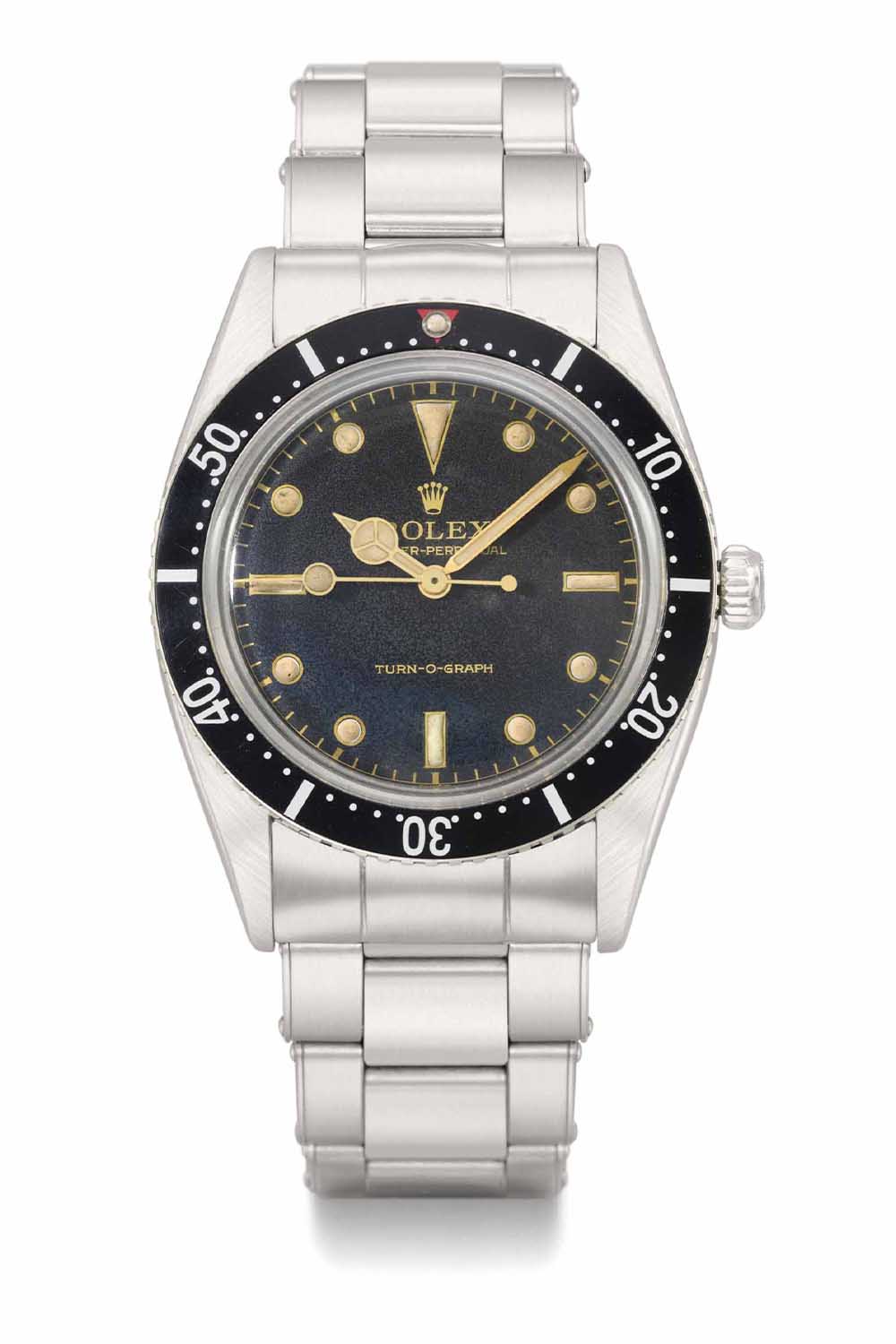
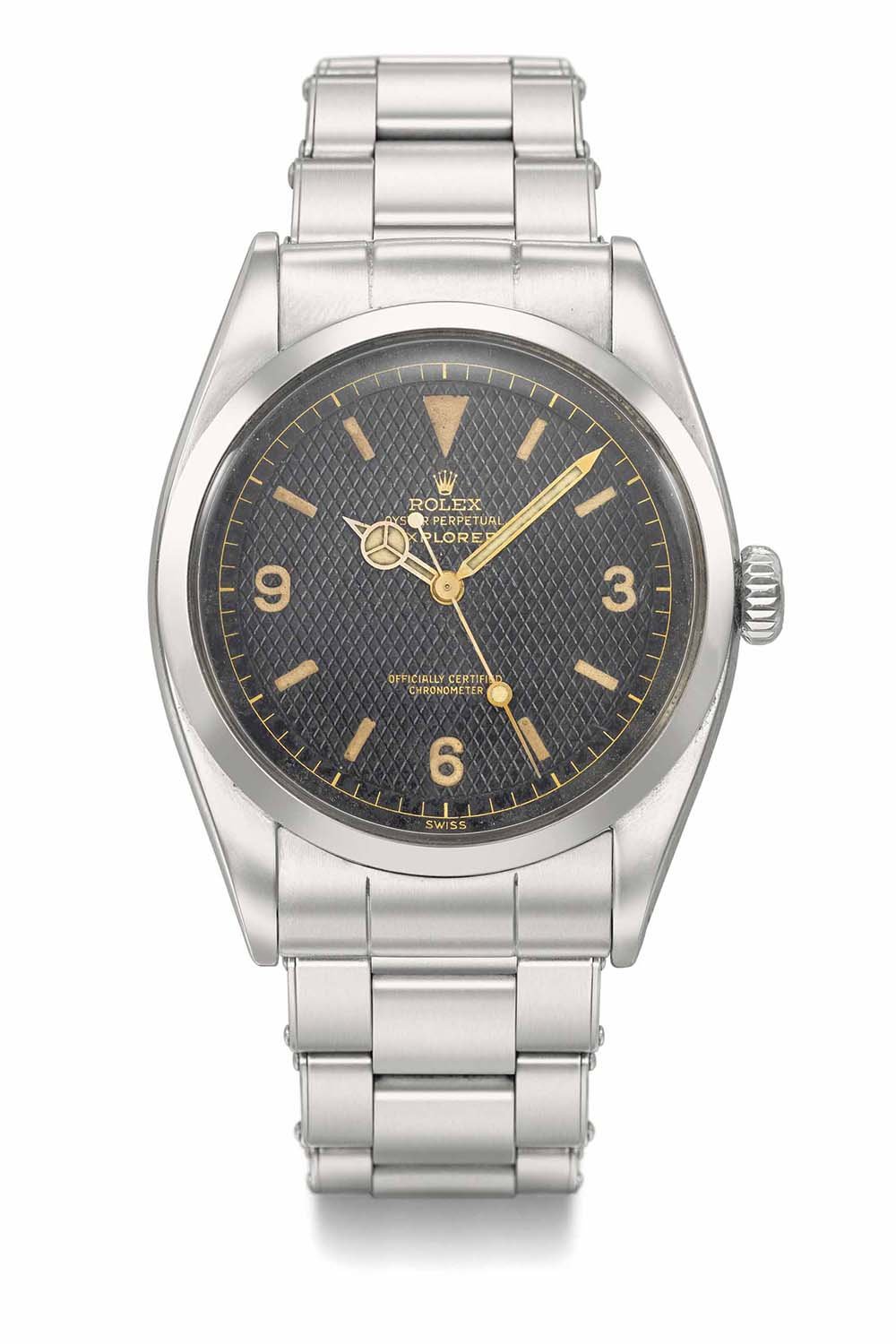
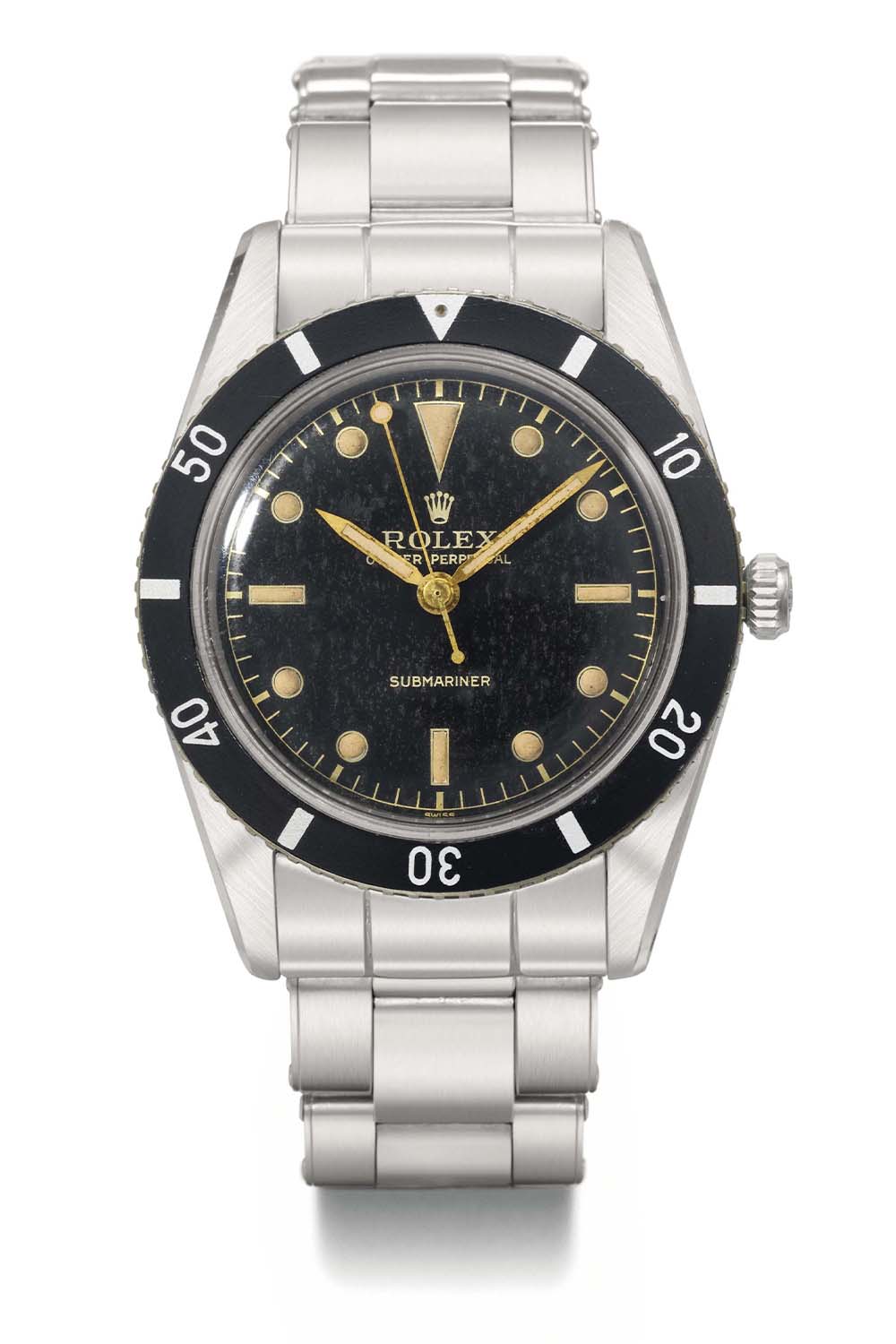
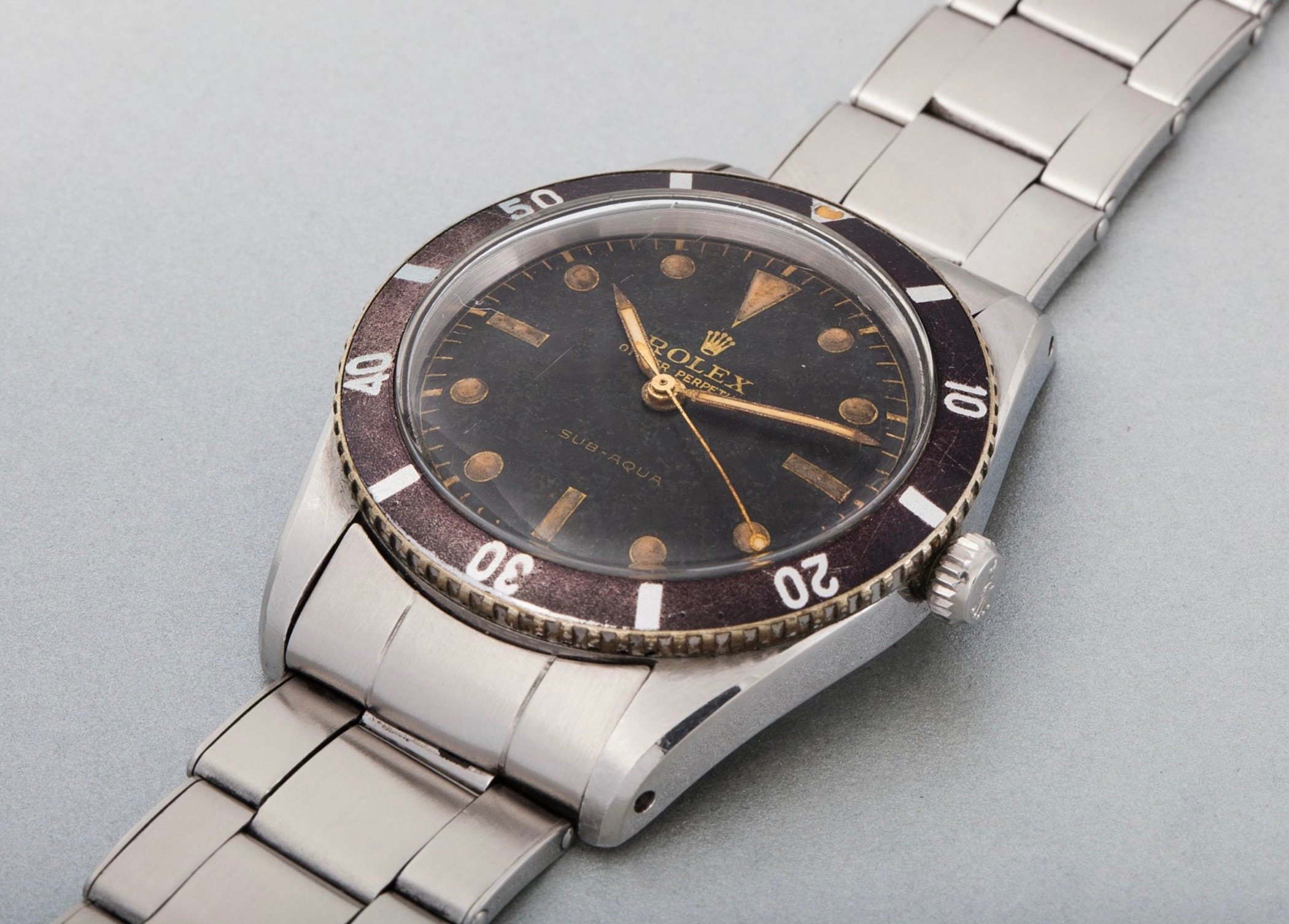

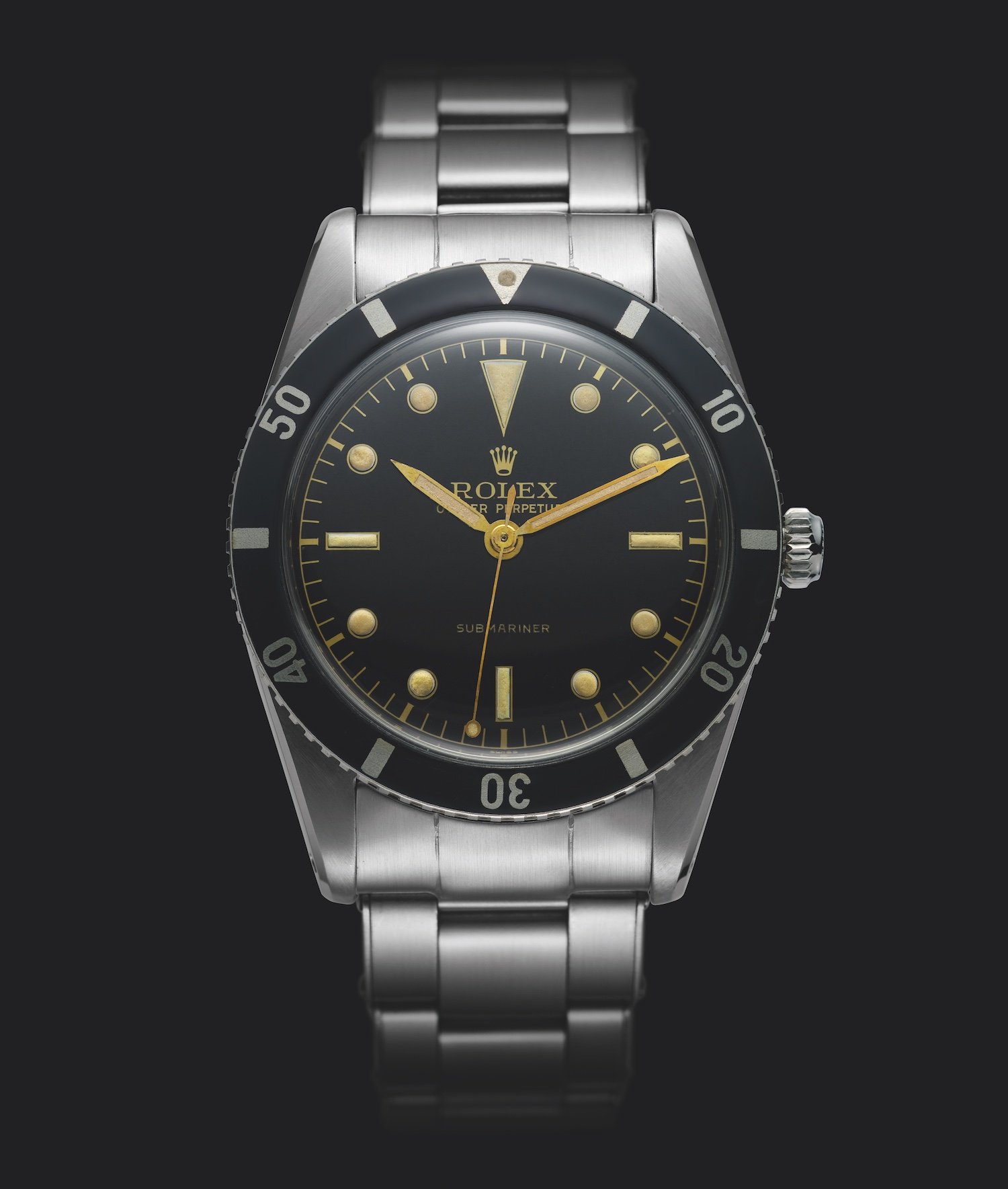
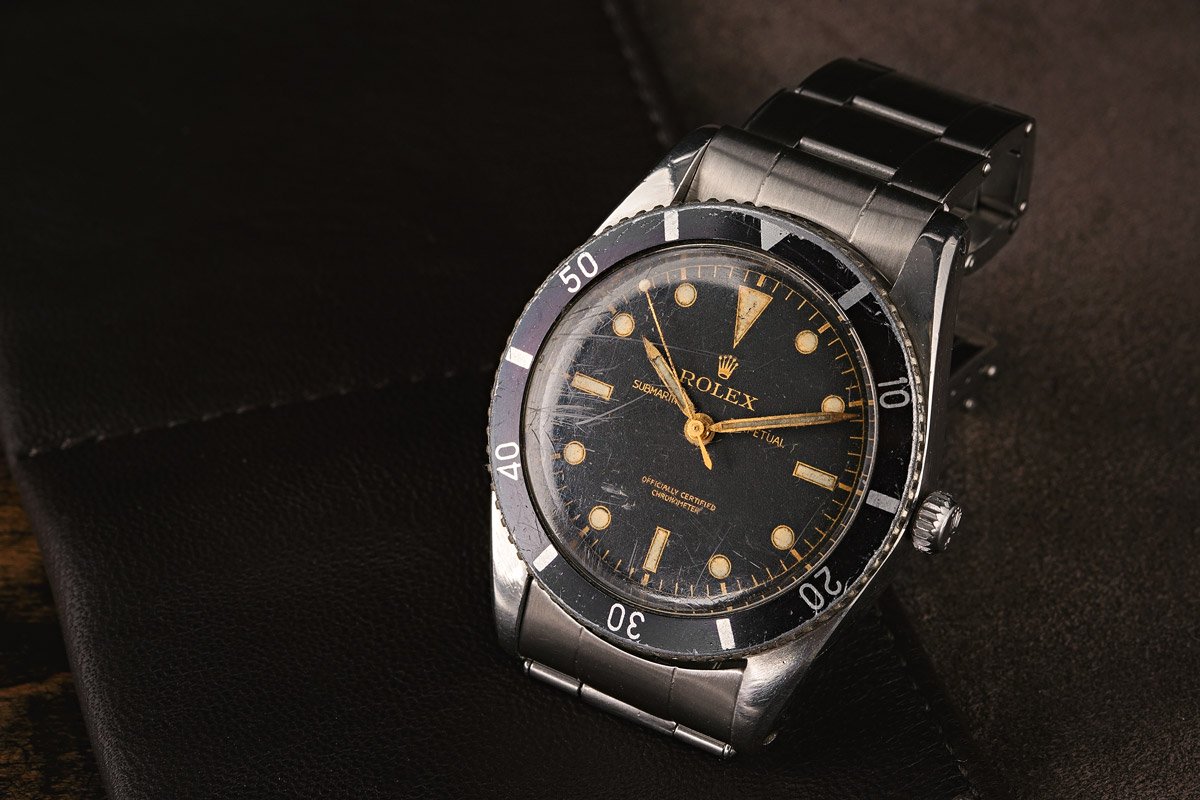

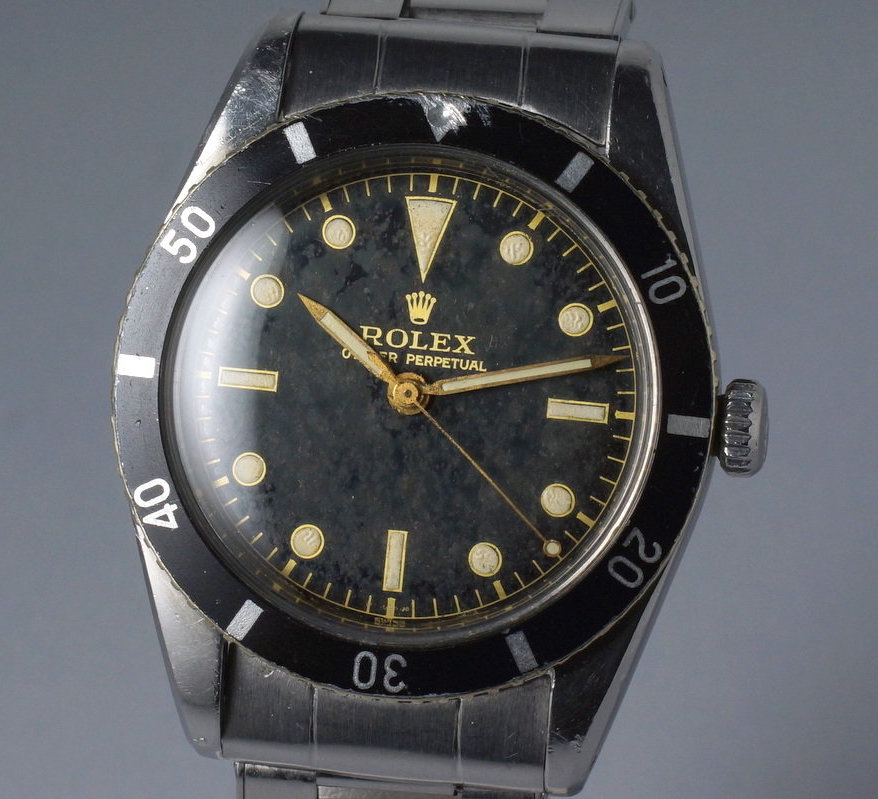
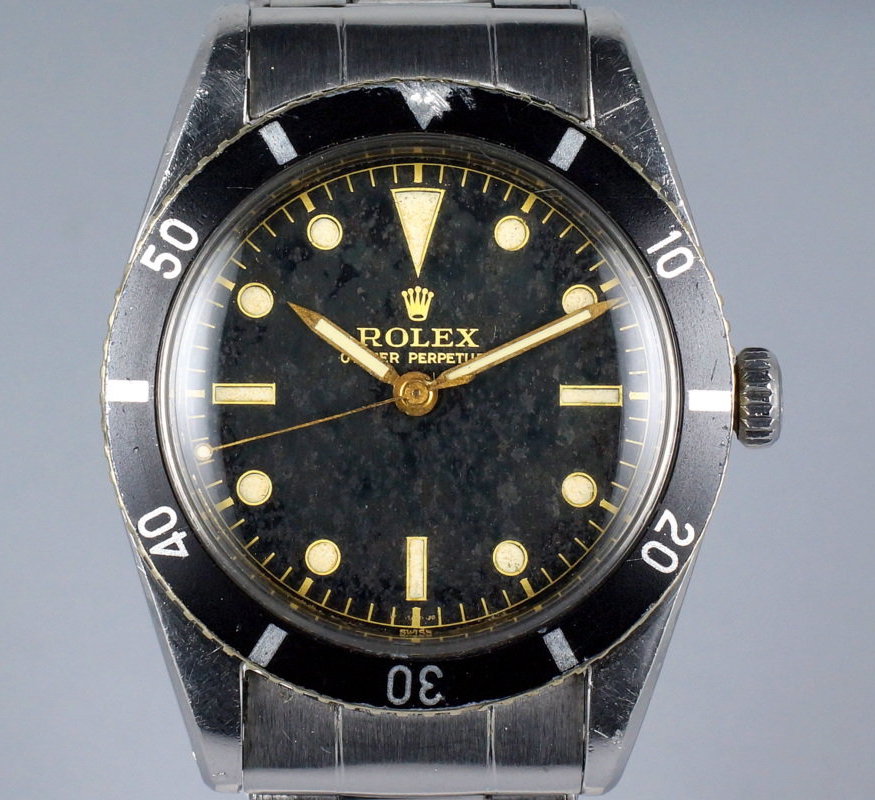
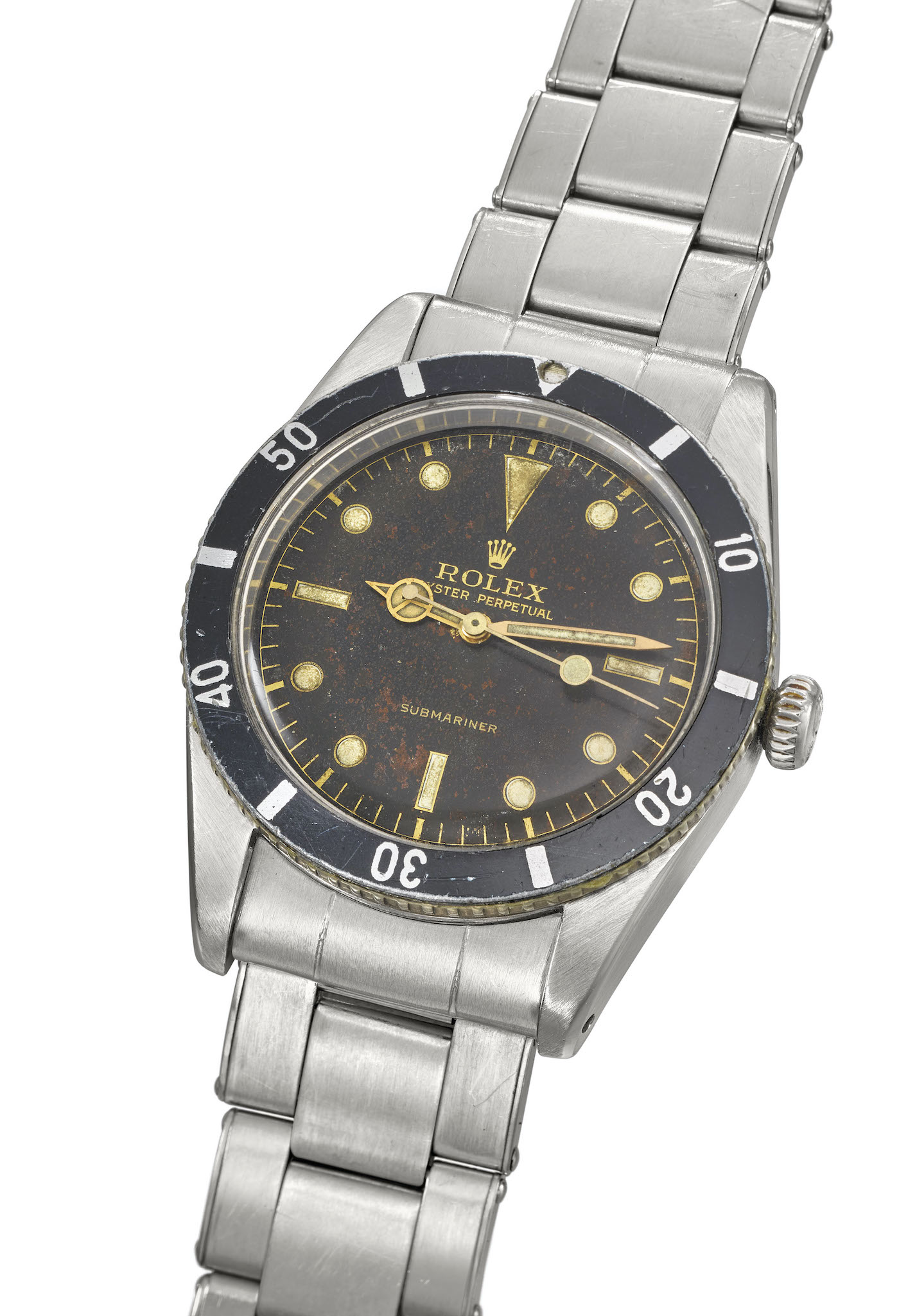
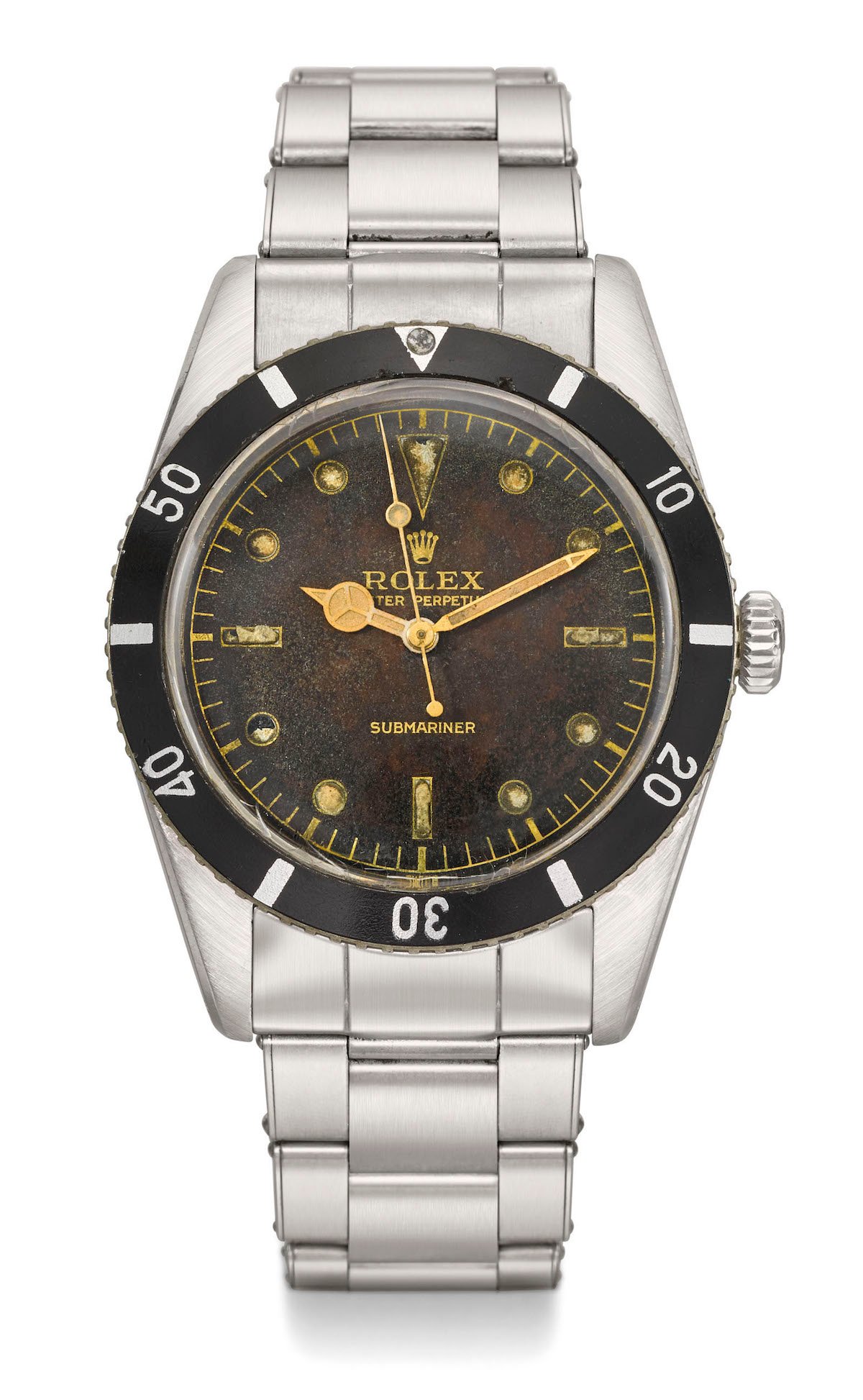
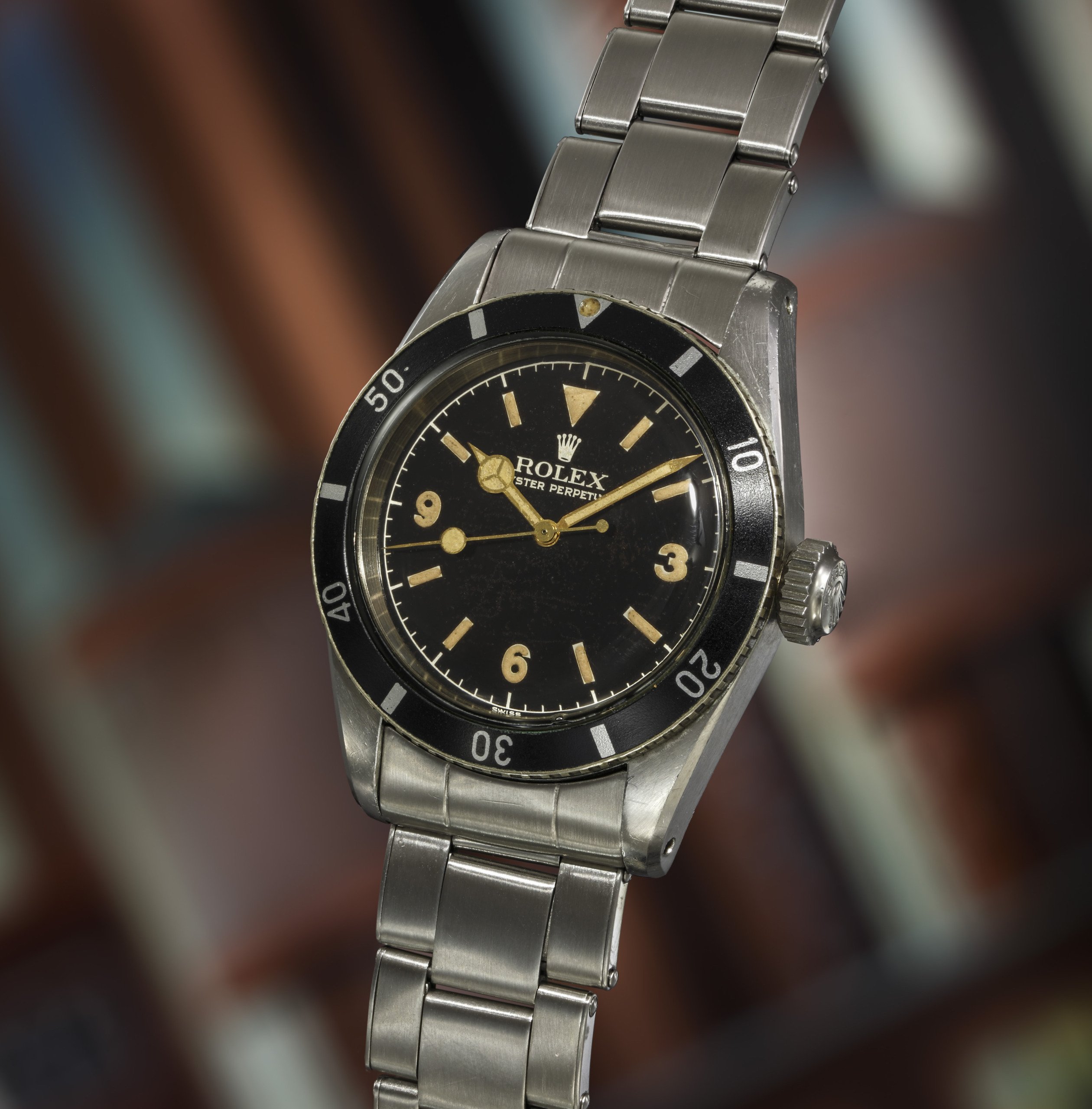

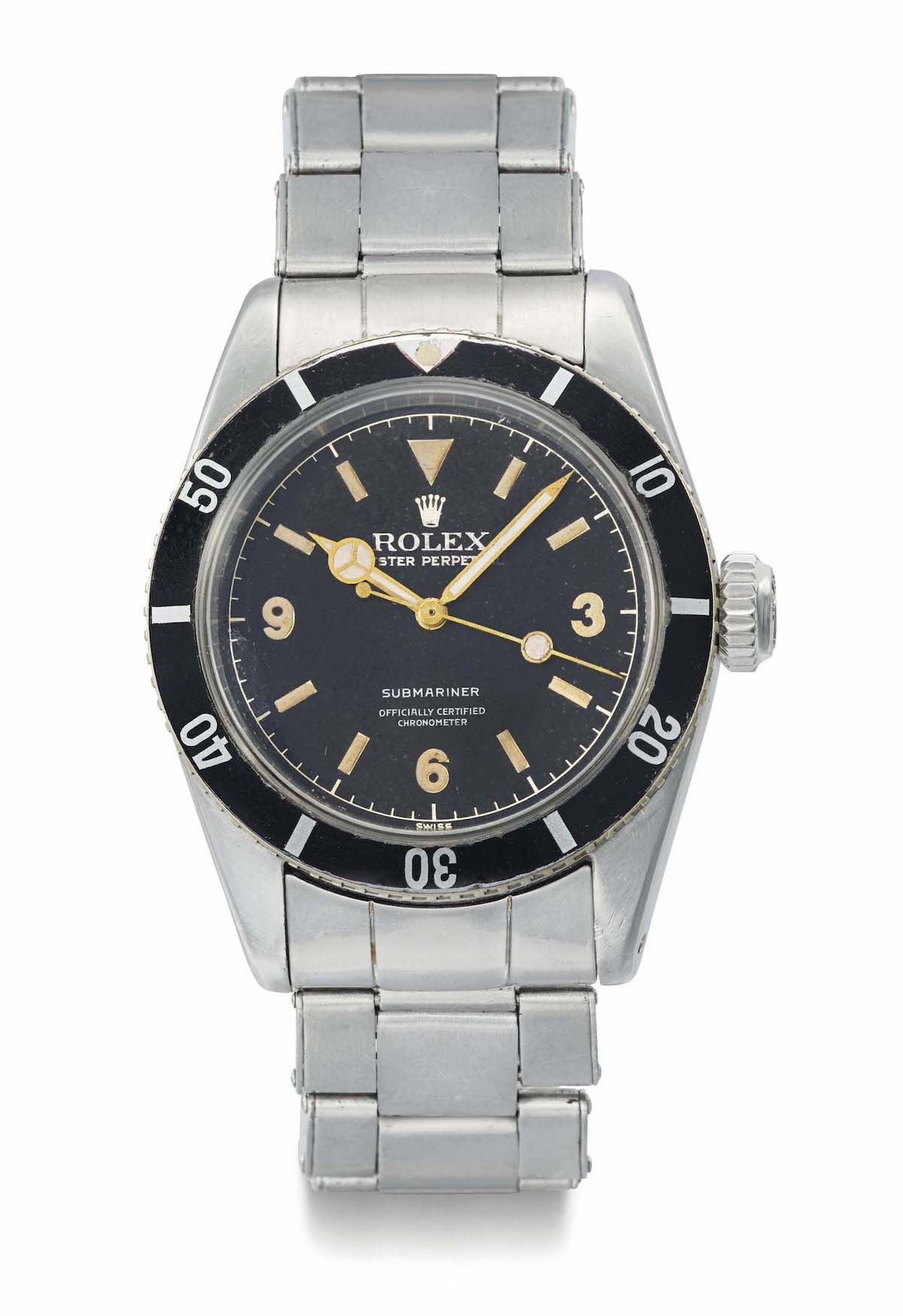
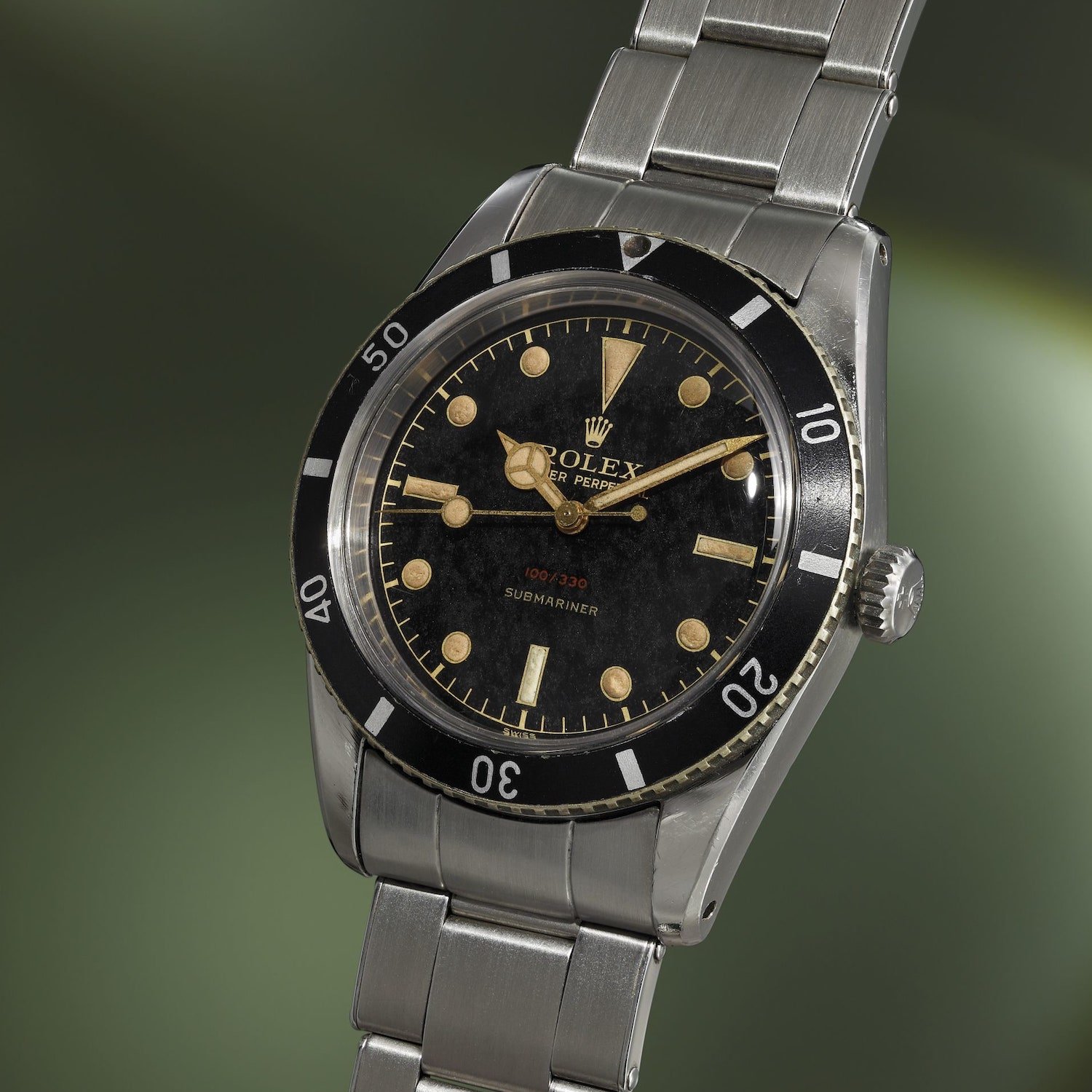
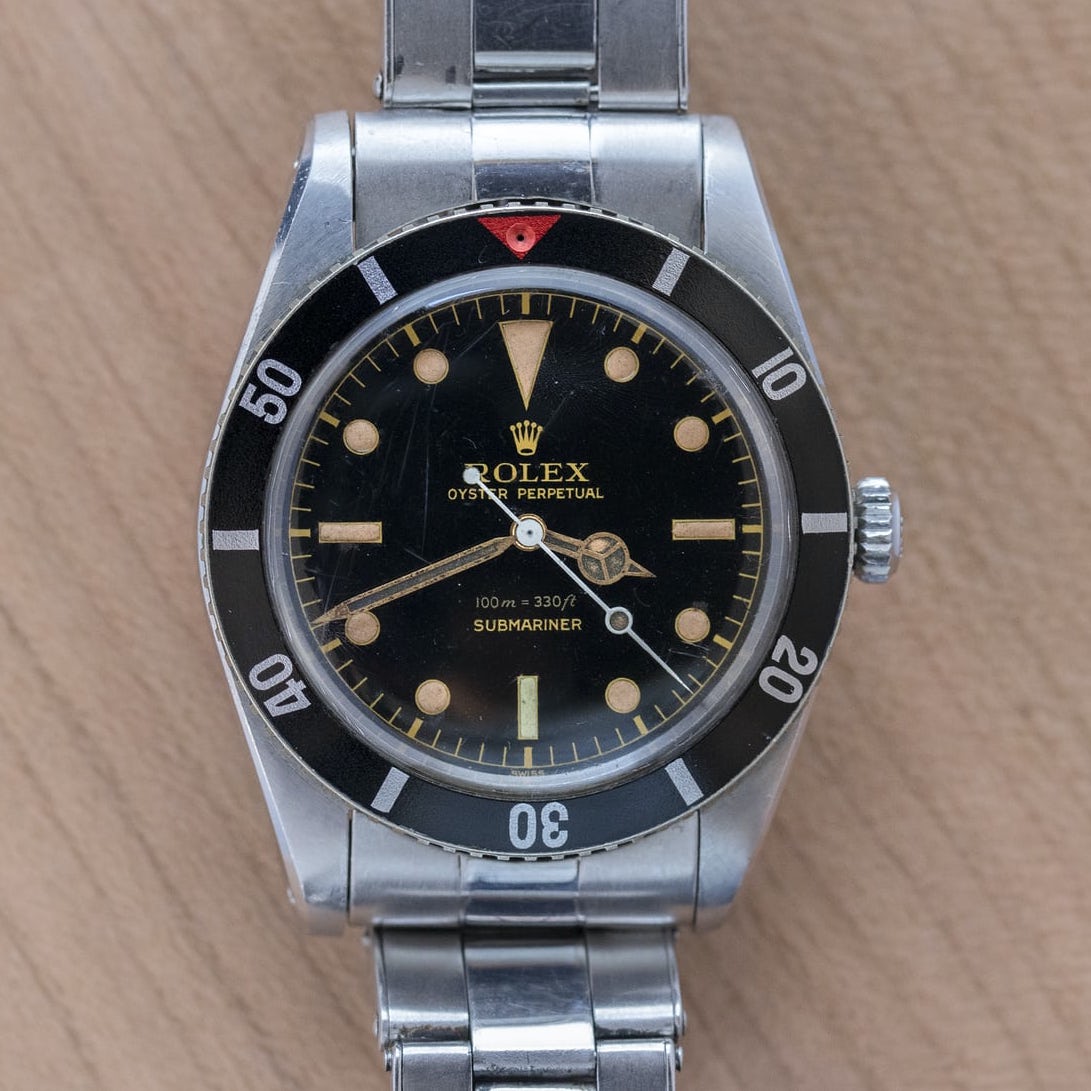
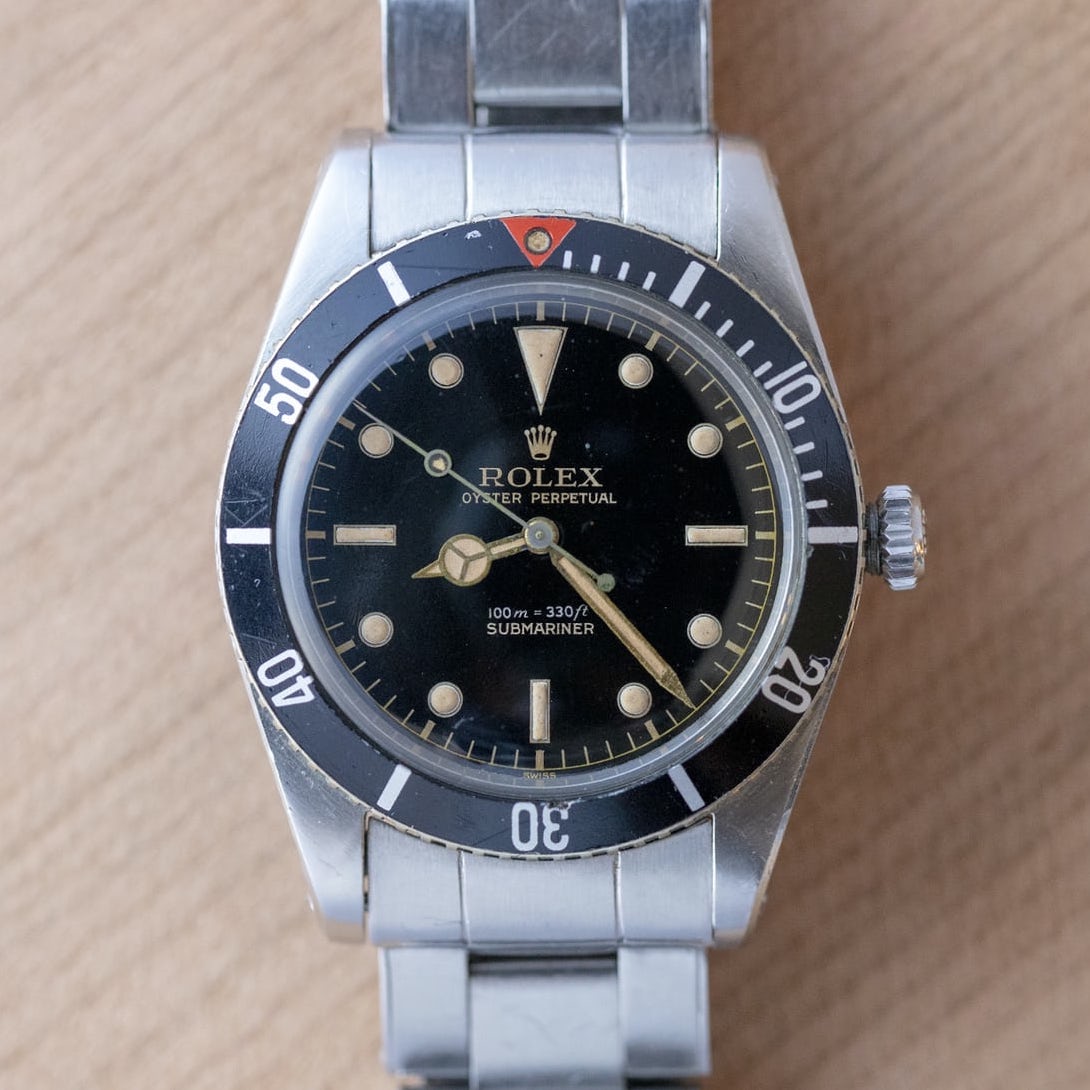
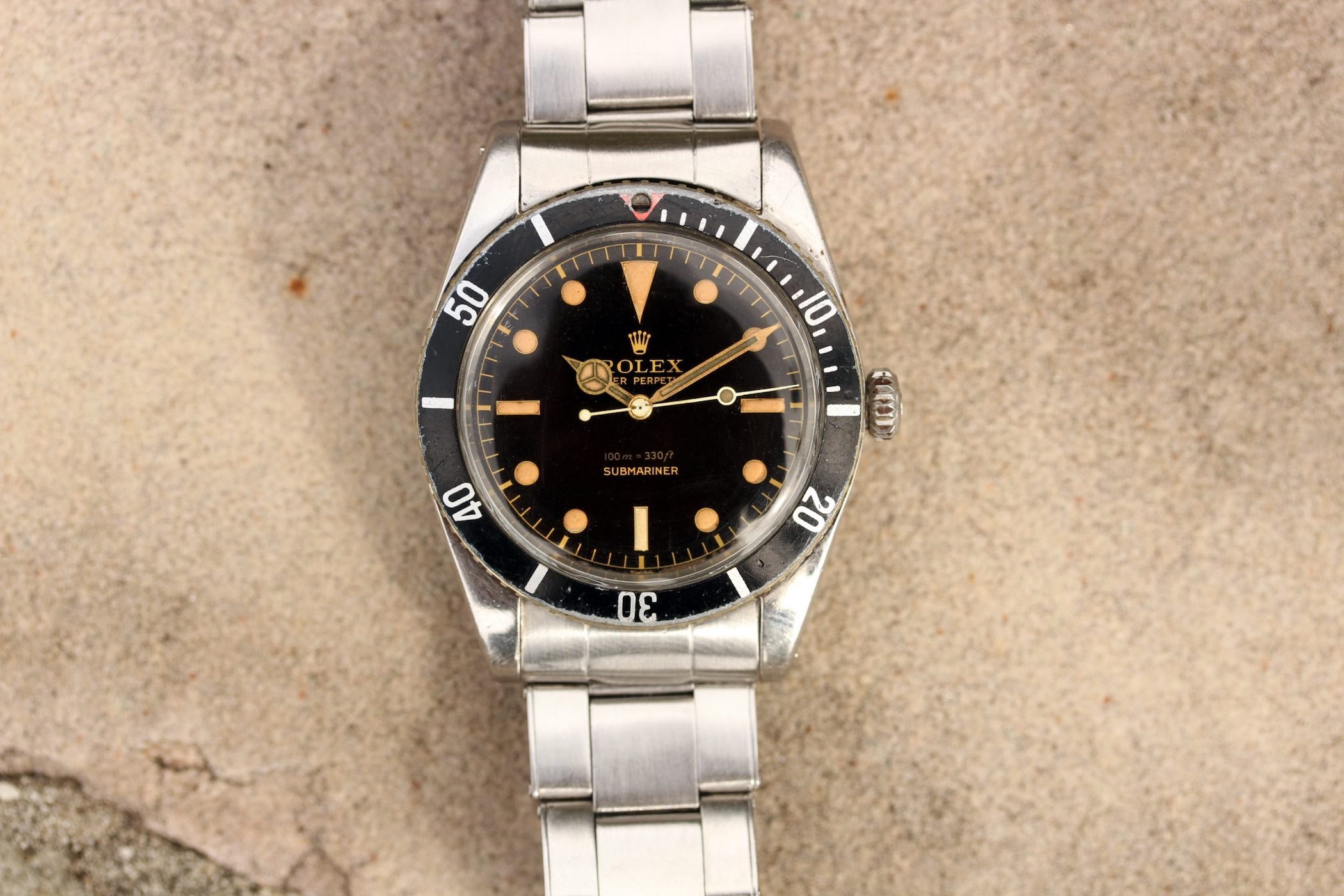
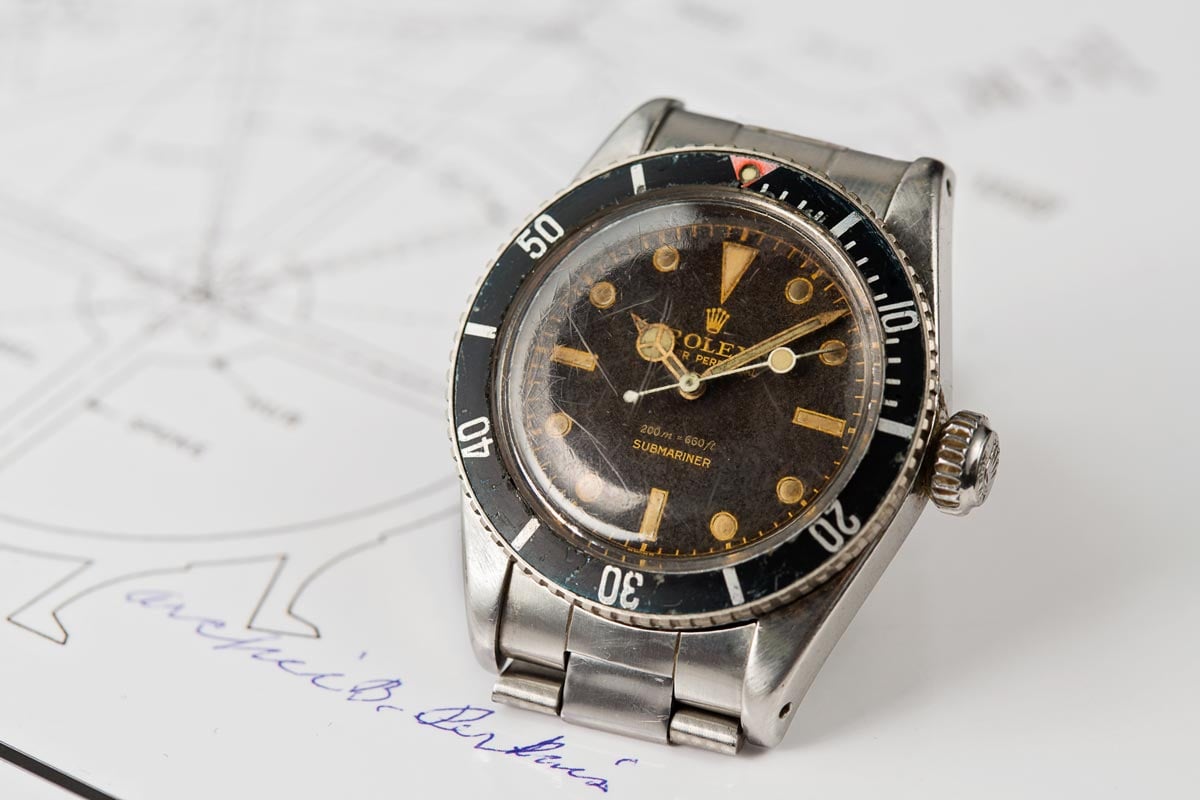
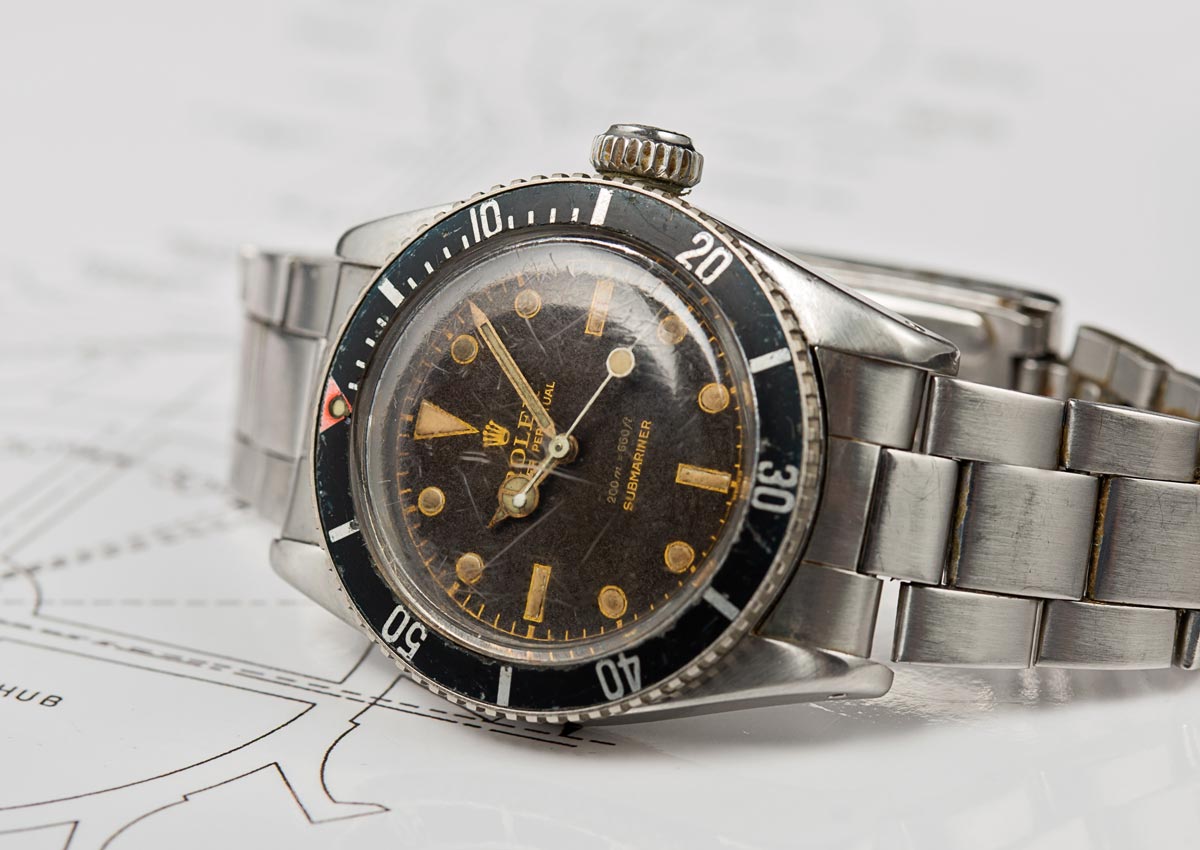
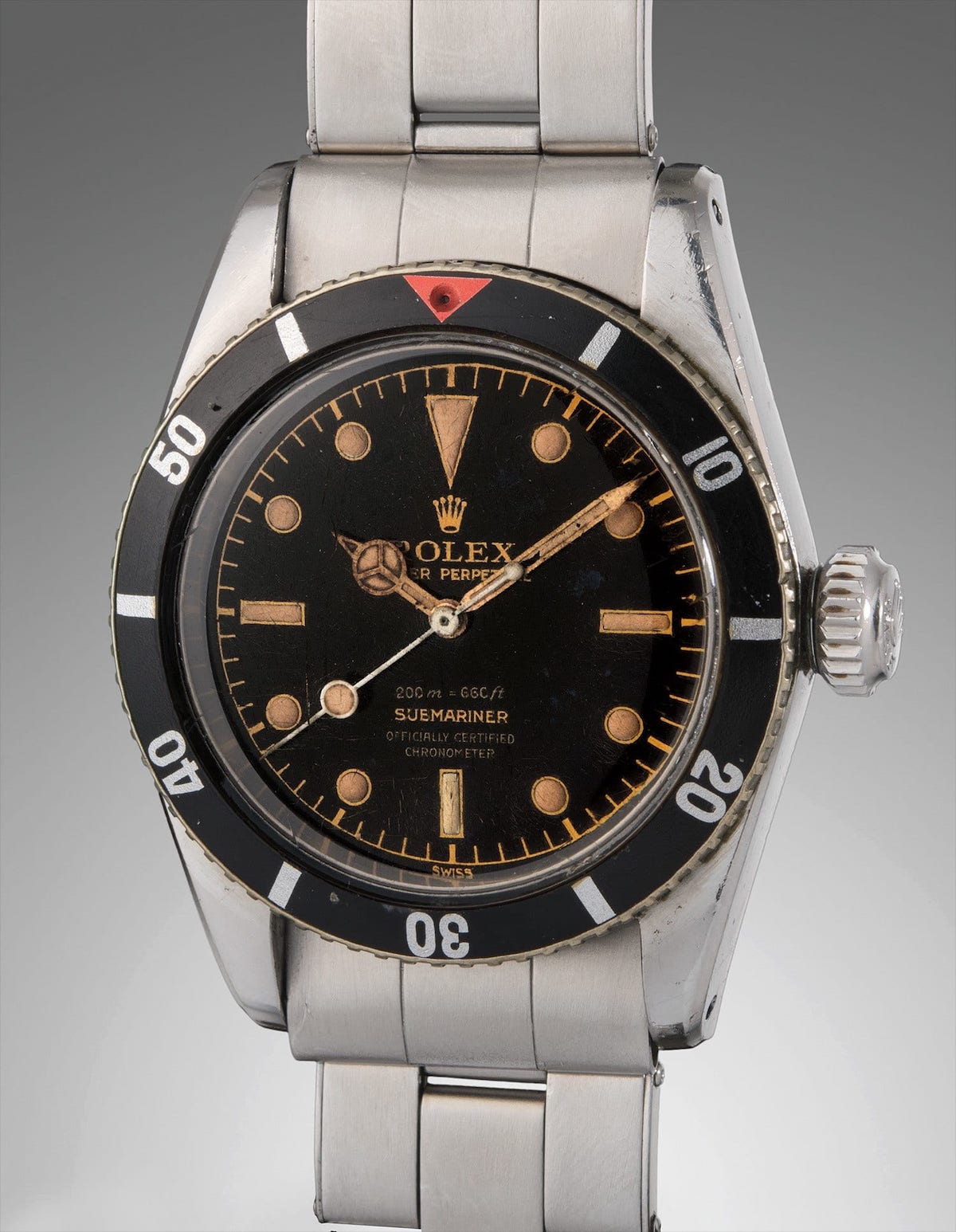
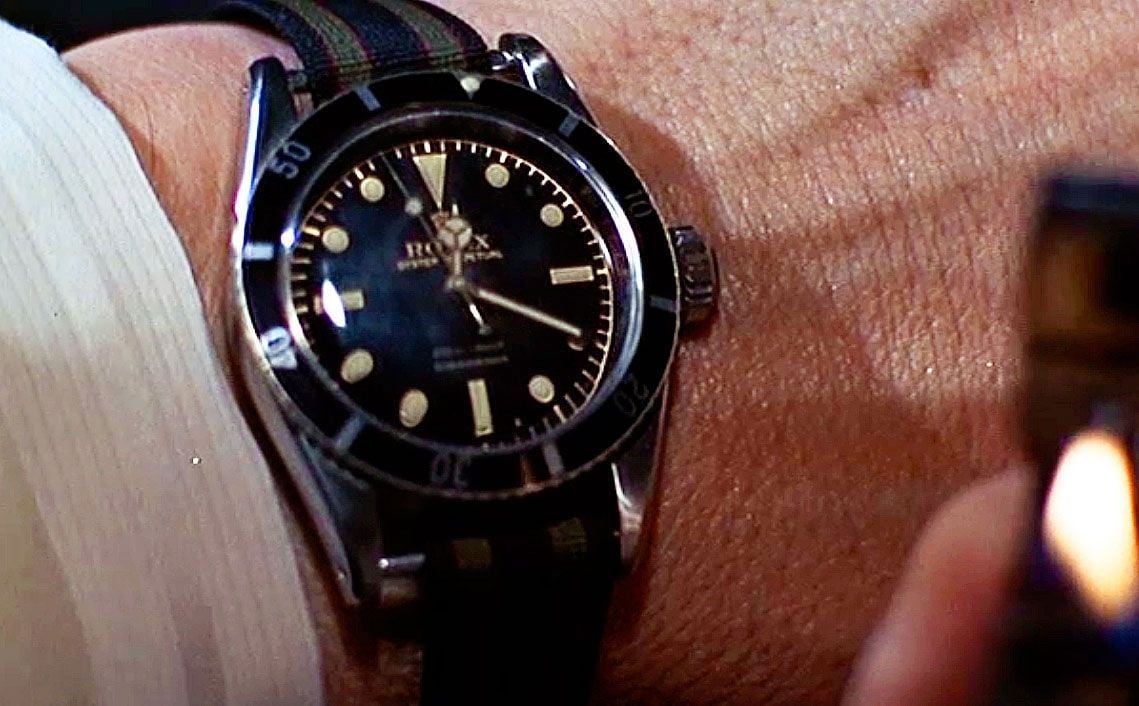



8 responses
having created the first dustproof and waterproof wristwatch back in 1926
world’s first self-winding mechanism with a Perpetual rotor (invented and patented by Rolex in 1931)
It is quite disappointing to read such sentences on a watch site as these are basically half truth. Omega had a waterproof wristwatch in 1932, called Omega Marine. There was a patent by Coviot in 1893 which describes rotor self winding watches. Rolex may has significant role in those but saying that they invented them is just oversimplification. It suggest that Rolex is a horological “superhero”, the company which “invented” everything, while the real life is much more sophisticated. This makes the whole article unauthentic for me.
Self-winding? Rolex only improved Harwood’s design. Harwood was influenced by earlier pocket watch designs. Long story
Hi Jarazorajar and S C, thank you both for your comments and added insight. Firstly, not to get into semantics but the article doesn’t suggest Rolex invented the self-winding movement, instead it states that Rolex created the first self-winding movement that uses a ‘Perpetual’ rotor. Marketing hyperbole? Perhaps but I just wanted to clarify that I am not suggesting Rolex invented the self-winding movement itself. Although it certainly did make improvements in this regard.
Jarazorajar, with regards to your comment about the waterproof case, could you please clarify what you mean? I am unsure how Omega having a waterproof case 6 years after Rolex means that Rolex wasn’t a pioneer in this area?
Thanks,
Tom
The Submariner is my daily watch. I have several other “dive” watches that I wear just to mix things up. When I go back to the Submariner I am delighted at how much more comfortable it wears on my wrist. It also garners more comments and attention – not that I wear it for attention, but it’s a plus. Loved the article Tom. Waiting for the next in the series.
Thanks,
Mark
Sorry, my fault, Omega Marine was the first dive watch. Tavannes had a waterproof wristwatch in 1917, called Submarine.
Thanks for the kind words Mark, and glad to hear you enjoy wearing your Submariner so much. Me too!
Thanks for the clarification Jarazorajar. I must admit I was not aware of the model from Tavannes. I have gone back and amended the article slightly to state more clearly that Rolex was not the first, but rather one of several early pioneers in this field. Thanks again for your insight.
HISTORY OF THE ROLEX SUBMARINER – PART 2? Great article
Tom, thank you, enjoyed reading the extensive line-up! Looking forward reading next episodes.